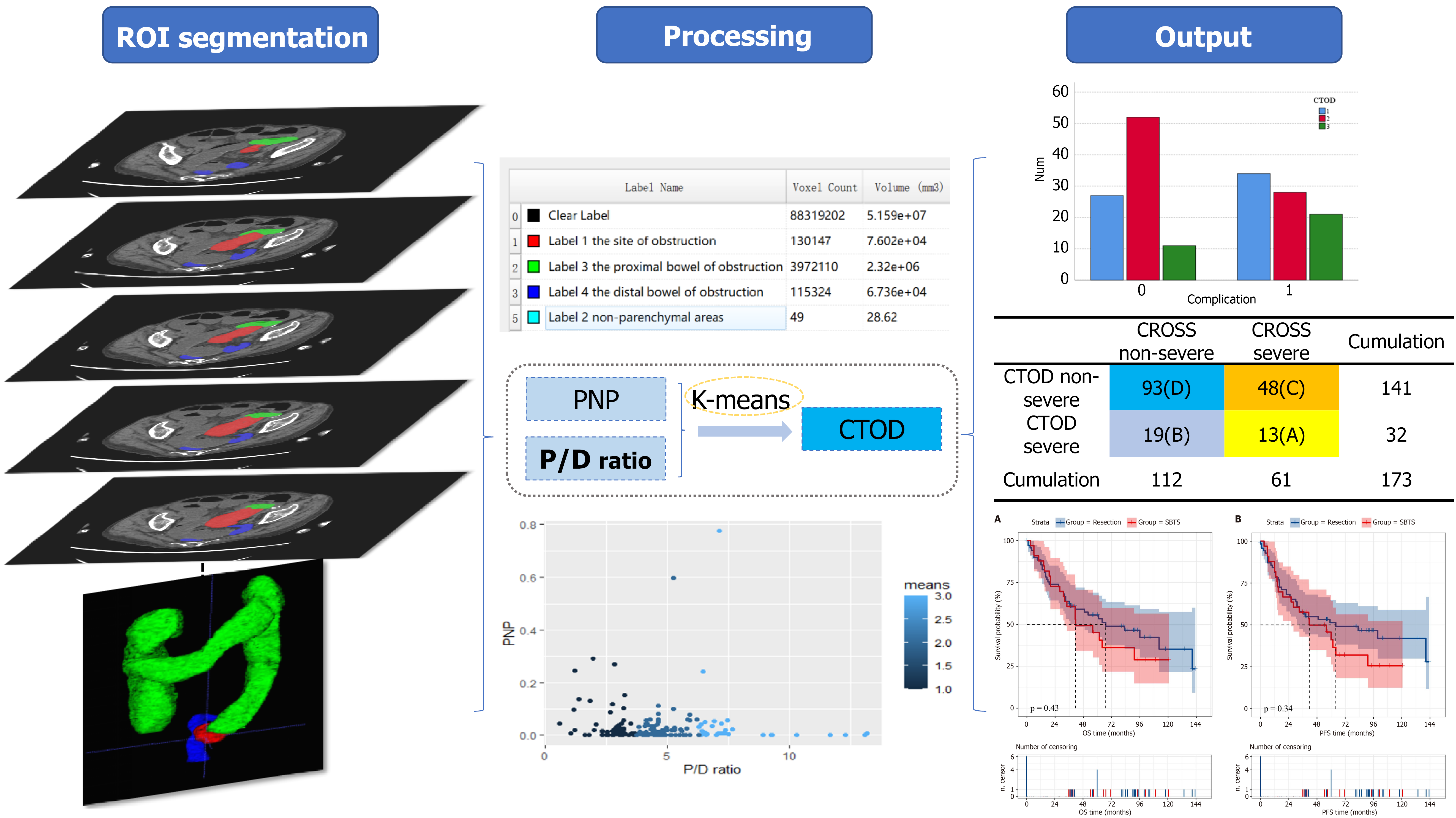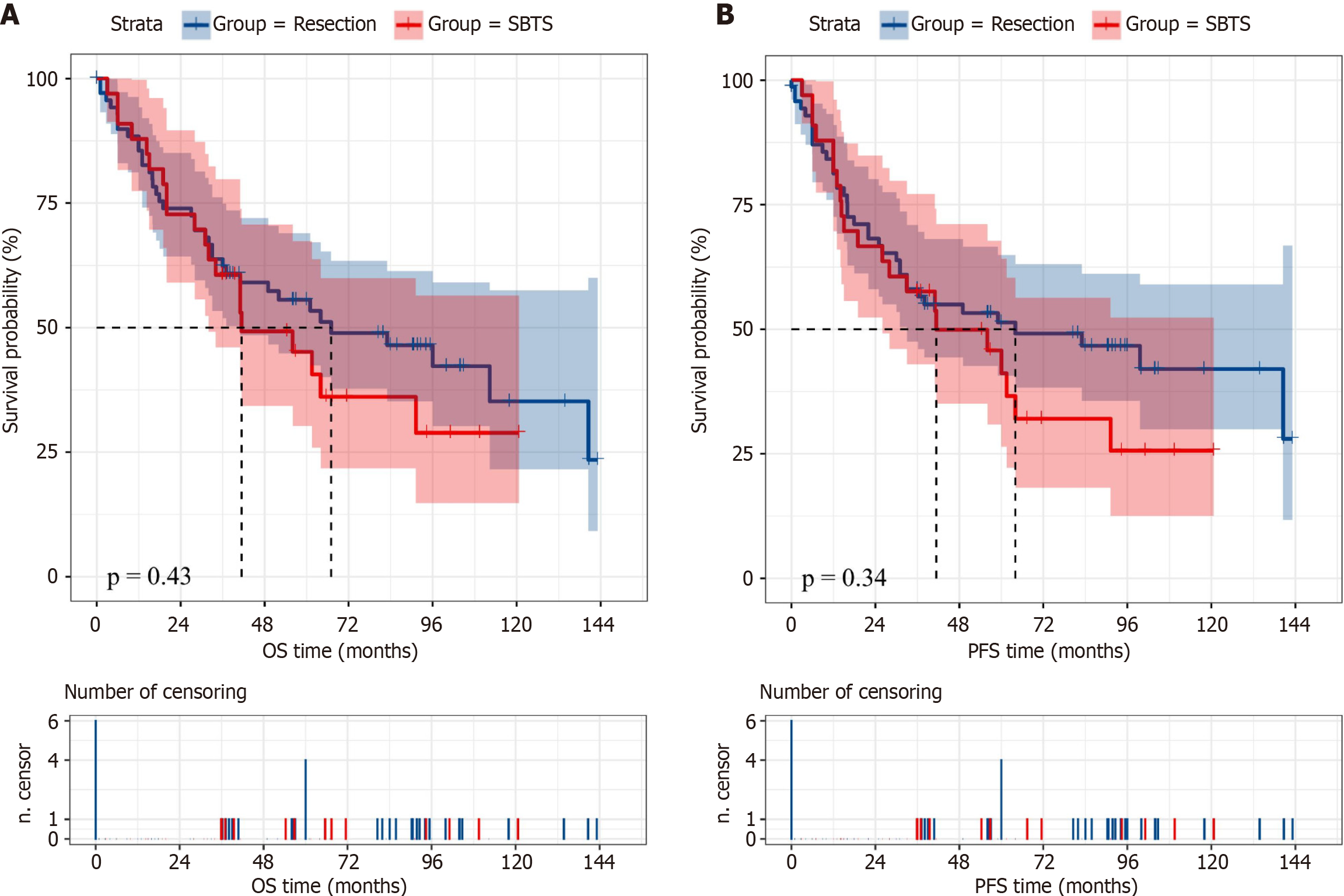Copyright
©The Author(s) 2025.
World J Gastrointest Oncol. Mar 15, 2025; 17(3): 102728
Published online Mar 15, 2025. doi: 10.4251/wjgo.v17.i3.102728
Published online Mar 15, 2025. doi: 10.4251/wjgo.v17.i3.102728
Figure 1 Workflow.
Regions of interests (ROIs) segmentation: Using the ITK-SNAP software to annotate ROIs of the colon and rectum on computed tomography (CT) scan images, including the site of obstruction (red and light blue) and its proximal (green) and distal bowel segments (dark blue). The obstruction site was subdivided into parenchymal (red) and nonparenchymal areas (light blue). Processing: CT-based obstructive degree (CTOD) was obtained using k-means, the ratio of proximal to distal obstruction, and the proportion of nonparenchymal areas at the site of obstruction. Output: Compare the incidence of complications associated with CTOD. CTOD was integrated with the colorectal obstruction scoring system to analyze the effect of emergency intervention on complications. Long-term outcomes were compared between the groups. ROIs: Regions of interests; PNP: Proportion of nonparenchymal areas at the site of obstruction; P/D: Proximal to distal obstruction; CTOD: Computed tomography-based obstructive degree; CROSS: Colorectal obstruction scoring system.
Figure 2 Overall survival and progression-free survival after surgery between the stenting as bridge to surgery and surgical resection groups.
A: Overall survival; B: Progression-free survival. OS: Overall survival; PFS: Progression-free survival; SBTS: Stenting as bridge to surgery.
- Citation: Shang-Guan XC, Zhang JR, Lin CN, Chen S, Wei Y, Chen WX, Pan L, Huang LQ, Zheng SH, Chen XQ. New scoring system for the evaluation obstructive degrees based on computed tomography for obstructive colorectal cancer. World J Gastrointest Oncol 2025; 17(3): 102728
- URL: https://www.wjgnet.com/1948-5204/full/v17/i3/102728.htm
- DOI: https://dx.doi.org/10.4251/wjgo.v17.i3.102728










